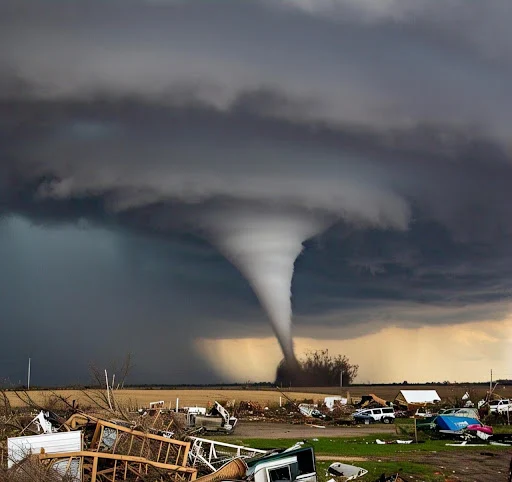
On April 1–3, 2025, a devastating tornado outbreak ravaged the Southern and Midwestern United States, leaving a trail of destruction across multiple states. This catastrophic event, one of the most severe in recent memory, saw nearly 100 tornadoes tear through communities from Texas to Indiana, claiming at least eight lives and injuring dozens more. Fueled by a potent storm system, the outbreak brought not only violent twisters but also damaging winds, large hail, and life-threatening flash flooding, overwhelming emergency response efforts and testing the resilience of affected regions.
The outbreak began on April 1 as a powerful upper-level trough collided with warm, moist air from the Gulf of Mexico, creating ideal conditions for supercell thunderstorms. By April 2, the National Weather Service’s Storm Prediction Center issued a rare "high risk" warning—its most urgent alert—covering eastern Arkansas, western Tennessee, southeast Missouri, western Kentucky, southern Illinois, and northwest Mississippi. Tornadoes of varying intensity, including several long-track EF3+ storms, struck with ferocity. In Lake City, Arkansas, a multiple-vortex tornado prompted a tornado emergency, leveling homes and businesses. Selmer, Tennessee, suffered a direct hit, with one fatality reported, while Jefferson County, Kentucky, saw a warehouse collapse, trapping workers amid the chaos.
The human toll was staggering. In Missouri, a fire chief perished while responding to the crisis, and in Tennessee, a teenage girl lost her life as storms demolished neighborhoods. Beyond the eight confirmed deaths, the outbreak injured countless others and displaced thousands, with preliminary damage estimates exceeding $1 billion. Power outages affected over 170,000 households, complicating recovery efforts as flooding from up to 8 inches of rain inundated low-lying areas. The Ohio and Mississippi River valleys faced "catastrophic" flood threats, with forecasters warning of a prolonged deluge through the weekend.
This disaster underscores the growing intensity of severe weather events, raising questions about climate change’s role in amplifying storm systems. As communities sift through the wreckage, the focus shifts to rebuilding and preparing for future threats. The April 2025 outbreak serves as a grim reminder of nature’s power and the urgent need for robust infrastructure and early warning systems to protect vulnerable populations in an increasingly volatile climate. For now, the South and Midwest mourn their losses while bracing for what remains of this relentless storm season.

Comments
Post a Comment
Comment